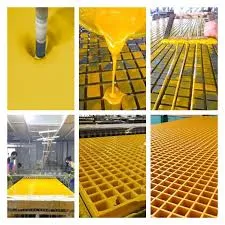
-
 Afrikaans
Afrikaans -
 Albanian
Albanian -
 Amharic
Amharic -
 Arabic
Arabic -
 Armenian
Armenian -
 Azerbaijani
Azerbaijani -
 Basque
Basque -
 Belarusian
Belarusian -
 Bengali
Bengali -
 Bosnian
Bosnian -
 Bulgarian
Bulgarian -
 Catalan
Catalan -
 Cebuano
Cebuano -
 China
China -
 China (Taiwan)
China (Taiwan) -
 Corsican
Corsican -
 Croatian
Croatian -
 Czech
Czech -
 Danish
Danish -
 Dutch
Dutch -
 English
English -
 Esperanto
Esperanto -
 Estonian
Estonian -
 Finnish
Finnish -
 French
French -
 Frisian
Frisian -
 Galician
Galician -
 Georgian
Georgian -
 German
German -
 Greek
Greek -
 Gujarati
Gujarati -
 Haitian Creole
Haitian Creole -
 hausa
hausa -
 hawaiian
hawaiian -
 Hebrew
Hebrew -
 Hindi
Hindi -
 Miao
Miao -
 Hungarian
Hungarian -
 Icelandic
Icelandic -
 igbo
igbo -
 Indonesian
Indonesian -
 irish
irish -
 Italian
Italian -
 Japanese
Japanese -
 Javanese
Javanese -
 Kannada
Kannada -
 kazakh
kazakh -
 Khmer
Khmer -
 Rwandese
Rwandese -
 Korean
Korean -
 Kurdish
Kurdish -
 Kyrgyz
Kyrgyz -
 Lao
Lao -
 Latin
Latin -
 Latvian
Latvian -
 Lithuanian
Lithuanian -
 Luxembourgish
Luxembourgish -
 Macedonian
Macedonian -
 Malgashi
Malgashi -
 Malay
Malay -
 Malayalam
Malayalam -
 Maltese
Maltese -
 Maori
Maori -
 Marathi
Marathi -
 Mongolian
Mongolian -
 Myanmar
Myanmar -
 Nepali
Nepali -
 Norwegian
Norwegian -
 Norwegian
Norwegian -
 Occitan
Occitan -
 Pashto
Pashto -
 Persian
Persian -
 Polish
Polish -
 Portuguese
Portuguese -
 Punjabi
Punjabi -
 Romanian
Romanian -
 Russian
Russian -
 Samoan
Samoan -
 Scottish Gaelic
Scottish Gaelic -
 Serbian
Serbian -
 Sesotho
Sesotho -
 Shona
Shona -
 Sindhi
Sindhi -
 Sinhala
Sinhala -
 Slovak
Slovak -
 Slovenian
Slovenian -
 Somali
Somali -
 Spanish
Spanish -
 Sundanese
Sundanese -
 Swahili
Swahili -
 Swedish
Swedish -
 Tagalog
Tagalog -
 Tajik
Tajik -
 Tamil
Tamil -
 Tatar
Tatar -
 Telugu
Telugu -
 Thai
Thai -
 Turkish
Turkish -
 Turkmen
Turkmen -
 Ukrainian
Ukrainian -
 Urdu
Urdu -
 Uighur
Uighur -
 Uzbek
Uzbek -
 Vietnamese
Vietnamese -
 Welsh
Welsh -
 Bantu
Bantu -
 Yiddish
Yiddish -
 Yoruba
Yoruba -
 Zulu
Zulu
Customizable Products | GRP - Tailored Solutions for Your Needs
Exploring the World of GRP Customized Products
In the dynamic landscape of modern manufacturing and consumer products, GRP (Glass Reinforced Plastic) emerges as a versatile and robust material that caters to a diverse range of applications. The customization of GRP products has gained significant traction due to its ability to meet specific customer needs, enhance functionality, and offer aesthetic appeal. In this article, we will delve into the world of GRP customized products, exploring their applications, advantages, and the process behind their creation.
Exploring the World of GRP Customized Products
The applications of GRP customized products are vast and varied. In the construction industry, GRP is increasingly used for architectural facades, roofing, and even interior elements. Its resistance to corrosion and weathering makes it an ideal choice for outdoor use. Moreover, the marine industry benefits from GRP's durability; customized boat hulls and components are crafted to endure harsh marine environments while maintaining structural integrity and performance.
grp customized product

In addition to construction and marine applications, GRP customization has made significant inroads into sectors such as transportation, utilities, and consumer goods. Customized GRP enclosures are commonly utilized for electrical systems and telecommunications infrastructure, providing protection against environmental factors. In the consumer market, GRP products such as bespoke furniture, decorative items, and sporting goods have captured the attention of individuals looking for unique and durable options.
The process of creating customized GRP products begins with understanding the client's specific requirements. Manufacturers often engage in detailed consultations to gather insights about the intended application, environmental conditions, and design preferences. Once a clear brief is established, the design phase commences, utilizing advanced computer-aided design (CAD) software to create precise models. These models are then used to produce molds, which are essential for shaping the GRP material.
Following the mold creation, layers of glass fibers are meticulously applied and saturated with resin, which is then cured to form a solid structure. This layering process not only enhances the strength of the final product but also allows for intricate designs and patterns. Once the curing process is complete, the product undergoes finishing touches, including sanding, painting, or coating, to achieve the desired appearance.
In conclusion, GRP customized products exemplify the intersection of innovation and practicality in modern manufacturing. Their adaptability to various industries, combined with the ability to tailor products to meet individual needs, makes GRP an invaluable material in today’s market. As the demand for customization continues to grow, GRP stands poised to meet the challenges of an ever-evolving consumer landscape, ensuring functionality, durability, and aesthetic satisfaction for diverse applications. Whether in construction, marine, or consumer goods, the future of GRP customization is bright, promising endless possibilities for creativity and utility.









